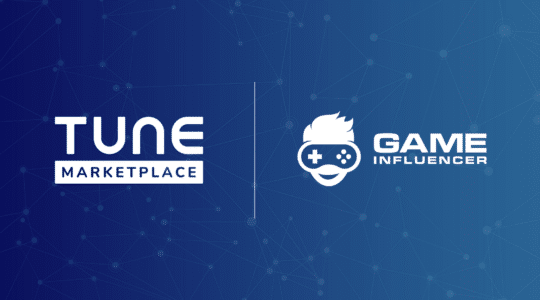
2016 brought us many surprises and changes, the world of mobile marketing included. We predicted things like that proximity-based marketing would get really big, app download rates would stagnate, user acquisition costs would jump back up, mobile web and apps would converge, and much more. So, now that we’re in 2017, what really happened? We decided to ask the experts whether their predictions came to life, or took a different turn.
1. “Convergence of Apps and Mobile Web is Coming” by Peter Hamilton
The 2016 prediction: That we would see streamlined web experience that would first help ease the path to purchase, and then deepen the in-app experience. The convergence would help avoid app store barriers and allow apps to retain customers better.
Today: “While many of the foundations for app and web convergence definitely came true, there is still so much more to come. We did see new technologies provided by both Apple and Google for mobile web such as AMP or Apple Pay on Safari. For apps, we saw great advancements with linking and indexing, as well as announcements for new ways to use apps like instant apps from Android. 2017 will lead us further toward the adoption of these technologies, forcing marketers to think about the funnel differently. It will take a convergence of thinking about web campaigns versus app campaigns for the technologies to come together even more quickly, and TUNE will make a huge effort in 2017 to support it.” — Peter Hamilton, CEO, TUNE
2. “No, Americans do not install an average of zero apps per month” by John Koetsier
The trend: TUNE’s mobile economist proved that the widespread belief that users installed an average of zero apps a month was wrong. His research showed that in actuality, users download 2–3 apps per month.
Today: “We’ve certainly passed peak app. And yet, the smartphone is now, more than ever, the primary personal on-ramp to the digital universe. And we continue to see companies appear from nowhere, publish an app, and get huge instantly, which shows us there’s never been a global distribution mechanism quite like the App Store and Google Play. People will continue to install apps, companies will continue to make money and become extremely successful on mobile. And yet, we’re seeing the locus of innovation — the bleeding edge — move on to AR, VR, and AI experiences. Guess what: those will really take off when they impact the mobile experience more profoundly.“ — John Koetsier, mobile economist, TUNE
3. “The mobile tipping point: 16 predictions for 2016” by John Koetsier
The prediction: Among many, the global smartphone penetration would hit 50%. App integrations were also on the verge of exploding (think being able to play Spotify in your Uber ride through the Uber app).
Today: “If it’s not half, it’s getting extremely close. The forecasts are 6.1B by 2020, and we’re not far off. What’s driving that number now is India, which is experiencing China’s level of growth from a decade ago.“ — John Koetsier, mobile economist, TUNE
4. “A mobile earthquake: Parse announces shutdown” by Alec Baker
The issue: Eleven months ago, Parse shut down. It gave users a year notice to migrate data to a server.
Today: “While some developers migrated to the newly open sourced Parse Server (which requires additional engineering resources to maintain) or transitioned to Google Firebase, many developers are now much more wary about putting free solutions at the heart of their technology stack. There is certainly demand for these services, however there is also a growing consensus that free isn’t always free.
“In the case of Parse, the cost of free was that the company was easily able to shutter service and pivot to another business model despite being used by 500,000 apps. Clients were forced to spend much time, money and developer resources finding, vetting, implementing, and transitioning to a new platform just to replace existing functionality. Not necessarily a step forward, but a needed step nonetheless to prevent service unavailability. For some this work was trivial, for others this frustration was a costly nightmare.
“In other cases ‘free’ means that you don’t own your own data. It means you give consent to the vendor to share your client data with other advertising, marketing or analytic services — a showstopper for any app that takes the privacy of their client data seriously.
“As there is a growing emphasis on both mobile and privacy in the enterprise, I suspect we’ll see the trend of running mission-critical pieces of mobile infrastructure with trusted partners grow throughout 2017.” — Alec Baker, product manager, In-App Marketing by TUNE
5. “Proximity-based marketing: why marketers need to use it” by Kelly Mullins
The trend: Proximity-based marketing will greatly expand the way marketers reach their customers. They will be able to understand and segment customers based on where they spend their time, engage them based on location, and prove marketing dollars in the physical world are positively affecting the digital side.
Today: “Last year we saw brands beginning to fully understand the power of proximity-based marketing. What will change this year is that brands are starting to understand the necessity of capturing that data in their first-party data pools. Brands will use location data in all aspects of their marketing, from active media targeting to analytics on in-store visits and purchases. Companies that can make real-time usage of location data will gain incredible insights into their customers.” — Kelly Mullins, director of platform partnerships, TUNE
Hungry for this year’s predictions? Get them all in “Discovered: The most treasured mobile marketing trends for 2017.”
Author
Becky is the Senior Content Marketing Manager at TUNE. Before TUNE, she handled content strategy and marketing communications at several tech startups in the Bay Area. Becky received her bachelor's degree in English from Wake Forest University. After a decade in San Francisco and Seattle, she has returned home to Charleston, SC, where you can find her strolling through Hampton Park with her pup and enjoying the simple things in life.




Leave a Reply
You must be logged in to post a comment.